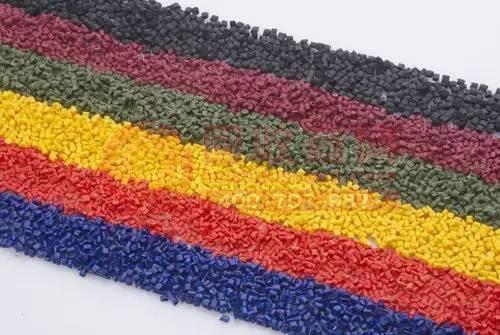
First, flame retardant modified materials
It is well known that conventional materials generally use a phosphorus-nitrogen modified material as a flame retardant. In doing so, red phosphorus can interfere with plastic coloration. In hue, red phosphorus can only be used to achieve black or red. In addition, its side effects can affect processing and are highly corrosive when used in high temperature and humid environments.
In addition, most commonly used inorganic flame retardants are based on aluminum and magnesium hydroxides, and the relatively high dosage is not only severely limiting the processing properties of plastics - especially injection molding, but also affects the parts produced. Mechanical properties. The main representative of nitrogen-based flame retardants, melamine cyanurate, can only be used for unfilled polyamides.
The insulation of plastics meets the increasing demands of manufacturers. However, when the thickness of the film wall of plastic products is thin, it is necessary to confirm whether it has a high dielectric strength. Manufacturers often achieve weight reduction and cost reduction through miniaturization and high functional integration. Due to the high structural requirements associated with the shape of the structure and the increasingly thinner thickness, the corresponding melt flow index needs to be realized and guaranteed.
In addition to "traditional" flame retardant modified materials based on halogens, red phosphorus and melamine or mixtures thereof, many materials companies have developed halogen-free, non-traditional flame retardant systems that have higher mechanical and mechanical properties. Electrical performance.
Halogen-free flame-retardant plastic products have almost no flame-retardant precipitation surface, because they do not contain any substances that react at low temperatures, so the process parameters are very similar compared to unprotected materials.
Second, halogen-free engineering plastics
More and more companies are now replacing halogenated materials with new materials containing modern flame retardants, actively developing and utilizing halogen-free materials for existing and new components. The mechanical properties and electrical properties of these materials must be at least as high as the performance of traditional fire retardants for high temperature materials, and the operation must be efficient.
In addition, the quantity requirements for certain materials vary greatly: some color-specific components require fewer operations, monthly material requirements are only in kilograms, and standard high-volume processing materials require Tons. Guaranteed supply in all circumstances – and guaranteed to meet years of certification requirements.
“Electronic products are demanding and high performance, but sometimes complex tolerances are required for complex geometries. The trade-offs between the two require some flexibility.†Halogen-free flame retardant plastics are compared to conventional high-temperature or standard flame-retardant materials. Can better meet the requirements of safety, strength, design and so on. It can be replaced with a simple operation, and the standard polyamide with different glass fiber content is cheaper, and these advantages can be reduced.
Third, fire safety standards
In addition to the DIN standard, halogen-free engineering plastics are also tested in accordance with the requirements of the US Safety Monitoring Laboratory (UL). The latter is a US electrical technology product certification organization, which develops plastic product testing methods based on testing of parts samples of different thicknesses. V-0 corresponds to the highest fire rating, and V-1 and V-2 correspond to relatively low requirements.
In addition, it is also required to pass the European standard IEC 60335. This standard specifies the safety requirements for low voltage "home and similar low voltage electrical appliances". The submitted documents must be informative, such as the dielectric strength and mechanical properties of the equipment.
Copper is a versatile and important material in various industries. It is a soft, malleable, and ductile metal that is a good conductor of electricity and heat. Copper has been used by humans for thousands of years, and it still plays a critical role in modern society.
One of the main advantages of copper is its excellent electrical conductivity. It is used extensively in electrical and electronics applications, such as wiring, power transmission, and printed circuit boards. Its thermal conductivity is also very high, making it suitable for heat exchangers and cooling systems.
Copper is also important in the construction industry. Its corrosion resistance, durability, and aesthetic appeal make it an ideal material for roofing, gutters, and plumbing systems. Copper is also used in architectural features such as decorative panels, wall cladding, and sculptures.
Copper is also an essential material in the manufacturing of various products. Its mechanical properties and workability make it ideal for manufacturing pipes, tubes, wires, and other hardware components. Copper alloys, such as brass and bronze, are used to make a wide range of products, including musical instruments, jewelry, and coins.
Moreover, copper is an environmentally friendly material. It is completely recyclable, and recycled copper can be used to manufacture new products without any loss of quality. Recycling copper also saves energy and reduces the need for mining, thereby conserving natural resources and reducing greenhouse gas emissions.
In conclusion, copper is a versatile material with many advantages. Its excellent electrical and thermal conductivity, durability, workability, and recyclability make it an essential material in various industries.
Copper And Zinc Alloy,Copper Cladding,Copper Nickel Alloy,Copper Aluminum Alloy
Lizhi Precision Manufacturing Technology Co.,Ltd , https://www.lizhipartsmfg.com
